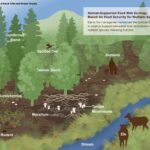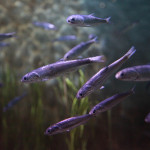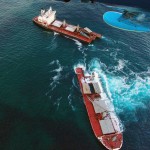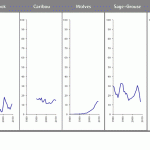Search Results
-
What’s Misunderstood about Indigenous Cultural Fire Is Sovereignty
-
Jordan Cove Energy Project, LNG facility may harm water quality, salmon runs
Southern Oregon regulators, Native American tribes, and local communities are worried that a proposed fossil fuel facility will, among other chaos, pollute water resources and irreversibly damage wildlife populations. If approved, the Jordan Cove Energy Project would put a behemoth liquefied natural gas (LNG) export facility in Coos Bay. The plan was believed to be dead in 2016 after federal regulators denied key permits, but the latest incarnation enjoys the...Read more » -
Weekend Reading 1/5/2018
Kristin I just read Naomi Klein’s No is Not Enough, which references the “Leap Manifesto” she and other leaders in Canada put together. It calls for 100% clean energy, a universal basic income to help pay for the important work of caretaking that is currently often unpaid or underpaid, paid for by a carbon tax, financial transaction tax, and cuts to military spending. Good stuff. Do men look for a...Read more » -
Weekend Reading 8/16/13
Alan If you want to build a temple in praise of your God, you’re legally obligated to devote much more space to parking than to the sanctuary. Notre-Dame de Paris? Illegal in every American city. The latest from parking-infographic-hero Seth Goodman. My kids watched The O.C., so I only had the most limited exposure to it. But I enjoyed this WaPo dialogue about it being the definitive treatment of the...Read more » -
The Real Story of Puget Sound’s Disappearing Herring
Editor’s note: A revised version of this article is available as a pdf. Puget Sound’s Pacific herring are a small fish with a whale-sized slate of problems. Many of the local herring stocks are in decline and despite some localized efforts to save them, their numbers haven’t bounced back. Scientists have identified numerous culprits that have likely contributed to the waning populations, including disease, pollution, increasing numbers of predators, climate...Read more » -
How Coal Affects Water Quality: State of the Science
After a recent spill at a British Columbia marine coal export terminal, the general manager was quoted in a local newspaper saying: There’s a lot of misinformation around coal. Coal is a naturally-occurring mineral. It is not toxic. Leaving aside his non sequitur—plenty of naturally-occurring minerals are toxic—he’s right that coal is subject to a lot of misinformation. There is a lot we should know, but don’t, about coal. For...Read more » -
Weekend Reading 9/14/12
Clark: Charts of the day: by this reckoning, the US housing bubble has more or less deflated. Prices have fallen back to roughly where they “should” be, based long-term on inflation and housing cost trends. That doesn’t mean that housing prices won’t go down further, or that there aren’t local bubbles somewhere. But at this point, US home prices are about what you might have expected, if you’d lived from 1970 through...Read more » -
Northwest Wildlife Icons and their Ecosystems Still at Risk
According to Sightline’s Cascadia Scorecard, several of the region’s wildlife icons are still at risk. Overall, gains for salmon, orcas, and wolves outweighed declines in caribou and sage-grouse, pushing the index to an all-time high. Still, more progress is needed.Read more » -
The Greenest Parks You've Ever Seen Are in Seattle
Editor’s note: Want to experience Seattle’s parks for yourself? Sign up for our daily or weekly emails before October 28, 2009 and be entered to win a two-night trip for two to Seattle. Sign up here. It’s only fitting that the Emerald City should be home to more than 400 parks. And that doesn’t even count the nearly 150 “pocket parks” that are tucked into street ends, often giving a...Read more » -
Sage-Grouse Update
As part of the Cascadia Scorecard‘s wildlife indicator, Sightline monitors the populations of five Northwest species as a proxy for broader ecological health. We track the population of greater sage-grouse in Oregon, which can tell us something about the integrity of the region’s sagebrush country. Unfortunately, recent population trends are troubling: biologists believe there are now as few sage-grouse in Oregon as at any time since they have been studied....Read more »








